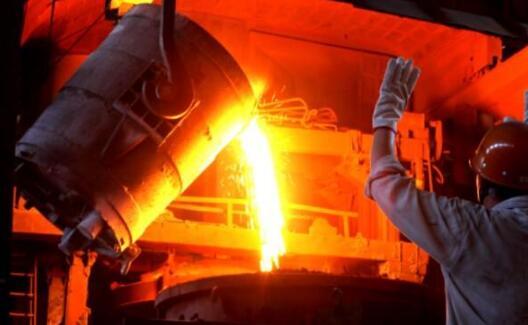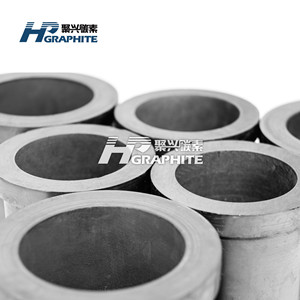Industry demand exceeds supply graphitization price rise!

Industry demand exceeds supply graphitization price rise!
According to industry media reports, an important raw material for lithium - the overall performance of the negative electrode materials in short supply. To get the graphite electrodes with high power. According to industry insiders, the current negative electrode material market is characterized by a situation of price without market. Affected by the tight supply of negative electrode graphitization, the overall supply of finished products is tight.
Since this year, the quotation for graphitization of negative electrode materials has risen sharply. As of September 13, the graphitization processing cost of negative light materials was 22,000-24,000 yuan/ton, and the quotation of some zero orders reached 23,000-25,000 yuan/ton, with a maximum increase of more than 100% compared with 12,000-15,000 yuan/ton at the beginning of 2021.
Industry insiders said that with the rise in the processing cost of negative electrode materials, the price of negative electrode materials may rise in the later stage. As of September 9, 2021, the mainstream price of high-end cathode is about 60,000 yuan to 80,000 yuan/ton.
Double control and environmental impact, graphitization enterprises appear to stop production.
Graphite is the mainstream material of negative electrode at present. Graphite is divided into natural graphite and artificial graphite. Compared with natural graphite, artificial graphite occupies most of the power battery market. In 2020, the proportion of artificial graphite increased from 79% in 2019 to 84%. Artificial graphite negative electrode material is made of needle coke, petroleum coke, asphalt coke and other raw materials calcined at a certain temperature, and then made by crushing, grading and high temperature graphitization.
Artificial graphite is an energy-intensive industry. In the graphitization process, the electricity cost accounts for about 60% of the graphitization cost. Therefore, graphitization industry is mainly concentrated in Inner Mongolia, Sichuan, Shanxi, Yunnan and other areas with relatively rich power resources. Due to the low unit electricity price, Inner Mongolia is an important agglomeration of negative electrode graphitization capacity in China, accounting for about 46% of the national total capacity.
In the first half of this year, due to the combination of energy consumption control and environmental protection factors in Inner Mongolia, the production capacity of the main production areas of negative graphitization can only be released at most about 85%, and it is compressed to about 70% in some months. Recently, the environmental protection inspection team entered Inner Mongolia again, and some negative electrode graphitization enterprises have stopped production one after another. Due to the influence of winter heating and Winter Olympic Games, the supply shortage of negative electrode graphitization has intensified. At the same time, recently, the double control policy of Yunnan has been exposed on the Internet. As a graphitization industry with high energy consumption, it may also be affected.

The tension will continue until the fourth quarter of next year
Negative electrode materials account for 10% - 15% of the cost of power batteries, and there is a broad market space in the future. From the perspective of downstream demand, the sales of new energy vehicles have increased sharply since the second half of last year. According to the data in August this year, the production and sales of new energy vehicles have respectively completed 309,000 and 321,000 units, with a year-on-year growth of 1.8 times. Meanwhile, the shipments of lithium-ion batteries also increased significantly. According to GGII data, in the first half of 2021, the cumulative output of lithium-ion batteries in China reached 110GWh, up 60% year on year. In the second half of the year, with the continuous improvement of the prosperity of power batteries, it is expected that the annual output of lithium-ion batteries will exceed 230GWh.
Lithium spurt demand to promote the industry leader to expand production. On September 13, Ningde Times announced that it plans to invest in the construction of a new lithium battery production and manufacturing base (Yichun) project in Yichun, Jiangxi Province, with a total investment of no more than 13.5 billion yuan.
Last year, there was almost no increase in negative electrode graphitization in China, but the output of negative electrode materials increased by 143% month on month in the first half of this year. In the first half of 2021, the graphitization capacity put into operation and effectively operated in China was only about 50,000 tons. The demand increased, but there was an obvious shortage of supply. Industry insiders said that the tension will further intensify in the second half of the year, and it is expected that the overall tension of negative electrode graphitization will continue until the fourth quarter of 2022.
Demand has driven the industry to expand production. Since this year, negative electrode material (artificial graphite) enterprises, including Putailai, Shanshan, Kaijin Energy, Zhongke Electric, Shangtai Technology, Xiangfenghua and so on have accelerated the expansion of graphitization capacity and negative electrode material integration projects, involving an amount of more than 25 billion yuan.

Here are some research records:
Price information:
Q: To what extent will the graphitization price rise and how long will it last?
A: The probability will exceed 25,000. At present, the quotation of many manufacturers has exceeded 20,000, and it is estimated to reach 22,000 at the end of the fourth quarter. Power batteries have high requirements for negative electrodes, and the stability of negative graphitization is more important. Only a few independent graphite chemical plants have such quality assurance. Whether excessive price increases will affect cooperation is still worthy of attention.
Q: The price of the negative electrode? Will it go up in the fourth quarter and next year?
A: The average selling price is between 40,000-50,000. The average selling price for 3C is much higher, rarely lower than 55,000. The average price for power batteries shipped to major manufacturers is 35,000-40,000, and the energy storage is lower at 22,000-23,000. Subsequent prices also need to be negotiated by both manufacturers.
Q: To what extent can graphitization price increase be transmitted to downstream battery manufacturers?
A: Negative electrode manufacturers have customer groups, and ATL is the major customer of Putai for consumer electronics. The customers are very scattered, and the power of discourse is very high. The quality also allows them to continue to raise prices, and Zichen and Shanshan have high bargaining power.
Q: What is the price increase for Korean battery manufacturers?
A: One by one, the size of the battery grows slowly. There are many formulas, and the negative electrode of each formula is different. Will change the price of low-cost conventional specifications and select specifications with large customer consumption for a round of price increase of 10% - 15%.
Supply and demand judgment:
Q: Graphitization part of the production capacity is what carbon enterprises are doing. Can they open up so much production capacity? If 800,000 tons corresponds to the negative electrode, the negative electrode capacity should be surplus. How to treat it?
A: 20-30% of high quality orders will not go to the third type of enterprises. Some enterprises will not get orders, and 5-10% of production capacity will be lost. 70% of the whole graphitization capacity is in Inner Mongolia, which is affected by power rationing policies and environmental protection. Some of the 800,000 tons of production capacity has been reported but has not been fully built. The total negative electrode shipment is at the level of 500,000-600,000 tons, which is similar to the demand. There is still 8-10% loss from graphitization to finished product shipment.
Q: How long will graphitization tension last?
A: It will last until 2024. It is difficult for independent small graphite chemical plants to be under construction because of carbon neutralization. Large negative electrode manufacturers will be limited by funds, and the construction of graphite chemical plants consumes a lot of funds.
Cost and profit:
Q: Net profit per ton of artificial graphite? How much can graphitization reduce the cost?
A: The price of power battery is 45000, which has a great relationship with the manufacturer. The average selling price of Putailai negative is 55,000, and the profit per ton is the highest among all negative manufacturers. It is still too low to reach the level of 40,000, and the price of graphite will be lower. Overall, the single ton profit of negative electrode is more than 10,000.
Q: Is it possible that the profit per ton of graphitized negative electrode will exceed 20,000 yuan next year?
A: Unlikely. A certain specification may be, but the average is unlikely. Customers are also clear about the cost of graphite and will not let the profit of graphite reach this level.
Q: The full cost of graphitization?
A: 12,000-13,000, the annual factory cost can be reduced by 5-10%. At present, the net profit per ton is 7,000-8,000.
Q: Is the profit margin of negative electrode manufacturers expanding or narrowing?
A: When graphitization rises, the profits of negative electrode manufacturers are expanding, part of which is passed to downstream battery manufacturers, moreover, the cost of their own graphitization is reduced. As long as the price of negative electrode products increases by more than 5%, the profit will increase.
Capacity and expansion:
Q: What is the capacity of type Ⅱ and Type Ⅲ graphitization manufacturers?
A: The first type of manufacturer is 200,000-250,000 tons, the second type is 200,000-250,000 tons, and the third type is 150,000 tons. The second type of manufacturers in the market has been robbed. At present, the third type of manufacturers are being evaluated and can only be carried out after testing. After the failure of a furnace experiment, the goods can not be delivered. It is not forced not to carry out the test.
Q: What is the cooperative relationship between negative electrode manufacturers and second-class manufacturers?
A: 80-90% of a major graphitized manufacturer will be locked up by a negative manufacturer, similar to the alliance, which has lasted for many years.
Q: Expansion of graphitization base of leading company under energy consumption problem?
A: The peak of construction in Inner Mongolia is over. The current peak of construction is in Shuifu of Yunnan province and Yibin of Sichuan Province, and the electricity price is relatively cheap. The local government is helping enterprises to get the evaluation. It will use different channels to get the evaluation. It will take some time.
Q: Many negative electrode enterprises plan to build graphitized negative electrode integrated production capacity in Inner Mongolia, Sichuan and other places. Will the current environmental protection policies and other factors affect the construction of these integrated projects?
A: The integration of Inner Mongolia has basically stopped. Sichuan is newly designed, from raw materials to product output. Sichuan is a low electricity price region. BYD and Ningde have set up battery factories in Yibin, which has led negative electrode manufacturers to expand production in Sichuan. At present, the expansion of production in Sichuan is smooth. More related information contact us.
No related results found








0 Replies